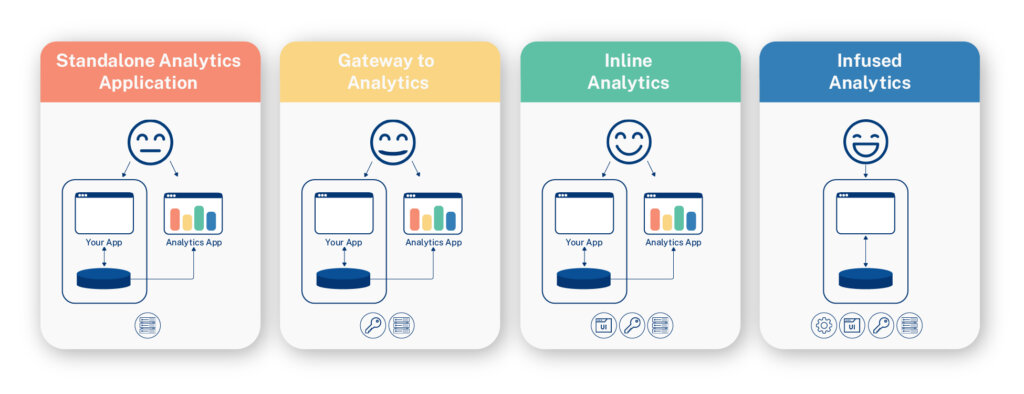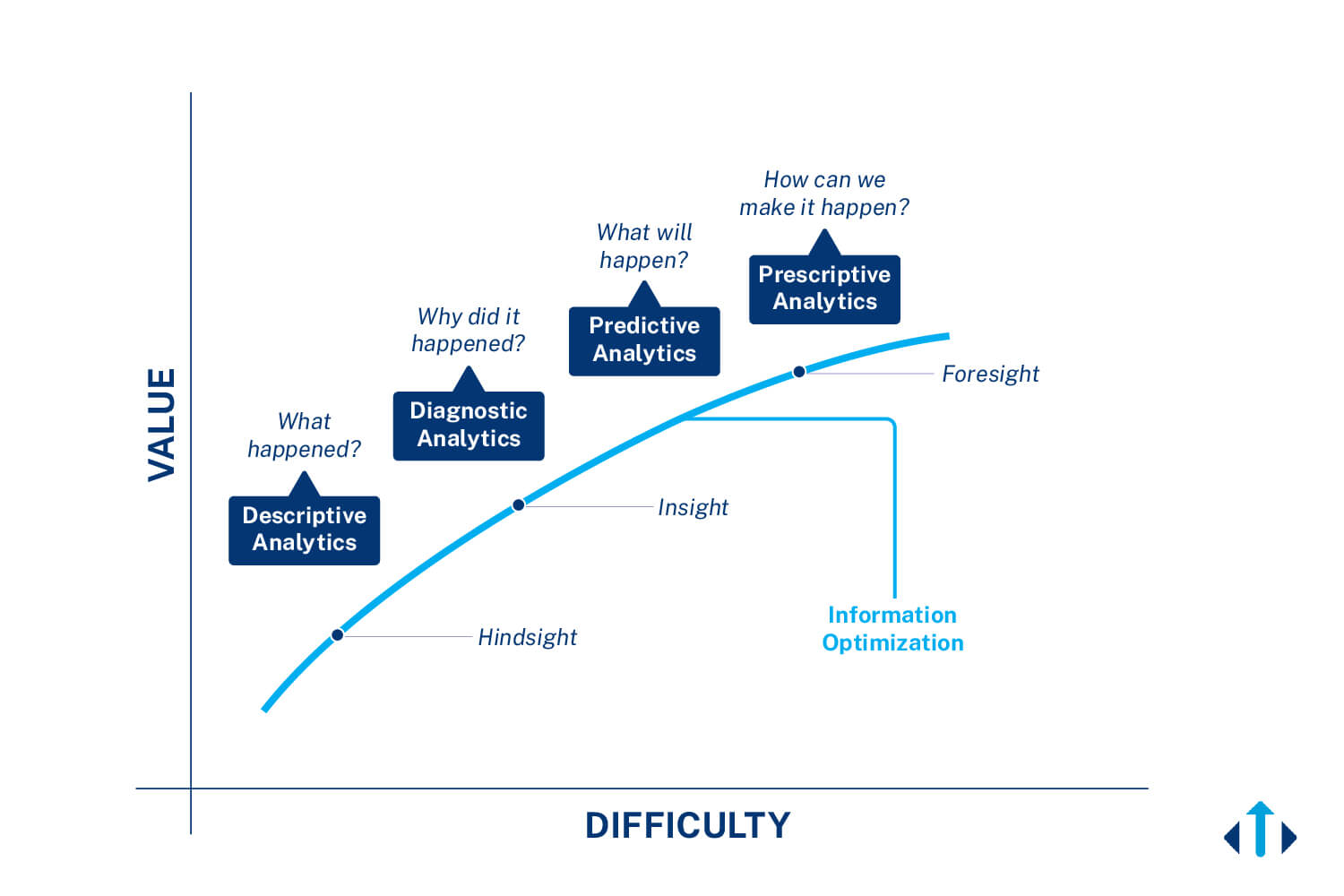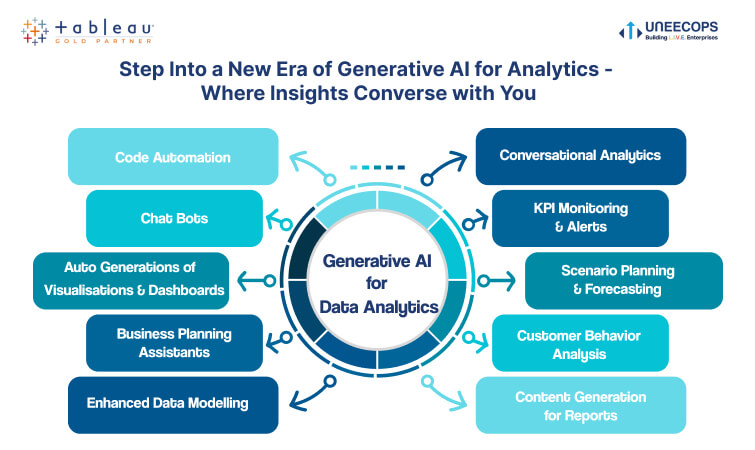No one ever made a decision because of number. They need a story.
Here is Storytelling with Data
In its basic essence, embedded analytics is just analytical content or capabilities integrated or embedded with an application or portal. Modern-day organizations generate data at an unprecedented rate. Embedded analytics platform enables access to data insights and analytics within the context of the organization’s workflow and decision-making processes.
In today’s competitive business environment, embedded analytics in modern applications is becoming increasingly important, and its market size being expected to reach USD 173.30 Billion by 2030 proves the same. As big data and the Internet of Things (IoT) rise, large volumes of data needs to be analyzed in real-time for maintaining a competitive advantage.
In today’s competitive business environment, embedded analytics solution is becoming increasingly important. As big data and the Internet of Things (IoT) rise, large volumes of data needs to be analyzed in real-time for maintaining a competitive advantage.
Embedded analytics platform has objectives similar to business intelligence. However, traditional BI is significantly different from embedded analytics in numerous ways. While traditional BI tools aggregate data from multiple resources and prepare it for analysis, embedded analytics seamlessly integrates the analytical capabilities into existing workflows for increased awareness, context, and support for decision-making related to different tasks.
There are many benefits attributed with the implementation of embedded analytics, such as better accuracy, faster decision-making, access to real-time data insights, and many more. However, implementing embedded analytics solution can also be a challenge as it requires careful planning and design. Identifying the right data sources and analytics tools is essential.
Embedded analytics is a powerful tool that empowers businesses to gain insights into their data conveniently. The evolution of such analytics has led to a fundamental shift in the way we consume data today. In this article, we will discuss about embedded analytics and provide an enterprise guide for the same. Let’s begin.
What Exactly is Embedded Analytics?
Despite its technical-sounding name, it’s quite straightforward – it’s about integrating “analytics” directly into your software. Forget toggling between applications with different datasets; embedded analytics brings the relevant information to your software’s dashboard.
Embedded analytics stands apart from traditional business intelligence (BI) systems that aggregate key metrics for your company. While BI provides an interpretation of data from various sources in a consolidated report, embedded analytics empowers your employees to observe their department’s direct interactions within the company.
The true advantage lies in empowering individuals at every stage of your business requirements to make optimal decisions. Unlike traditional reporting to management about the status of a product or service, embedded analytics enables individuals to see real-time correlations between their work and others’.
Imagine being a salesperson, where embedded analytics serves as the dashboard for your sales software. Customize your homepage with data crucial to you – like leads closed and conversion rates – and leverage that real-time information to enhance your performance. It’s your relevant, constantly updated source of insights.
The outcome of embedded analytics? Empowered employees who make faster, informed decisions in their daily tasks, eliminating the need to wait for a data analyst to guide them on the next steps.
Types of Embedded Analytics
Understanding the different types of embedded analytics platform is essential to knowing the best options for your enterprise:
- Standalone analytics enable software developers to embed analytics into their applications in order to mash and merge data for answering complex business questions.
- Detached analytics makes the host run separately from the analytics but keeps it linked to the latter through URLs. It is beneficial when numerous applications leverage the same analytics environment or service.
- Inline analytics makes analytics a part of the host app by making it look and act like the host. However, it runs as a separate module within it.
- Fused analytics delivers the most compact integration within the host app, making the analytics and the host communicate in a bi-directional manner.
Understanding these types, the various forms of analytics that can be embedded into different applications are:
- Dashboards: A popular form of embedded analytics in modern applications that offer high-level visual overviews of KPIs and metrics to users. They are customizable according to department-specific needs.
- Data Visualizations: Powerful embedded analytics in the form of insightful visuals like charts, graphs, etc., to provide visual representations of data to users.
- Reports: A method to embed analytics in business processes commonly used to give detailed insights about specific aspects of business operations to users. They are customizable according to department-specific needs.
- Predictive analytics: A smart form of embedded analytics that uses machine learning algorithms to analyze data and offer predictions. Has high ROI of embedded analytics.
- Social Media analytics: A form of embedded analytics that enables firms to monitor and analyze their social media activity for gaining useful customer behavior insights.

Why are Enterprises Embracing Embedded Analytics in Modern Applications?
Whether your business is large or small, you have data. Having data means you most likely also have the potential to leverage that data to build a better customer experience, or upgrade your services to partners and vendors.
Embedded analytics allows you to bring impactful data and insights to the fingertips of everyday app users. For product leaders looking to move beyond the uses of traditional BI with ways that leverage data into new revenue streams or seamless user experiences, here are some of the reasons why you should consider getting started with embedded analytics.
- Reason#1: Help enterprises to offer faster insights to customers.
- Reason#2: Offers a faster time to market.
- Reason#3: Increases revenue streams through data monetization
- Reason#4: Enables better decision-making.
- Reason#5: Provides a foundation for enhanced operational efficiency.
- Reason#6: Brings a competitive advantage to enterprises.
- Reason#7: Enhances customer experiences.
- Reason#8: Allows better data governance and security.
- Reason#9: Enables cost savings.
Differentiating offerings from competitors and standing out in the marketplace is the goal of every organization in today’s cut-throat market. In order to increase adoption rates, it is necessary to provide faster insights to customers.
Analytics development needs a significant amount of expertise, time, and resources, all of which makes it hard to quickly introduce a reliable and scalable solution. Investing in cloud-based embedded analytics solutions can help you achieve a faster time to market by reducing your burdens and time consumption on maintenance of infrastructure or storage significantly.
Embedded analytics can help offer on-demand insights within the application. It saves time that would have otherwise been invested in data wrangling and intuitively offers a report with relevant data insights and value to customers. As analytics become more accessible, customer adoption rates are increased, leading to a better market reputation and larger profit bases.
Data monetization is a hot topic in the world of analytics right now. As the amount of data available to organizations is increasing, companies are realizing that there are non-traditional and innovative ways to use this information to monetize their data. Data monetization happens when you turn company-generated data into measurable economic benefits for your business. Like cost reductions, additional revenue streams, etc.
Embedded analytics enables enterprises to open new revenue streams and grow opportunity size. New lines of business can be developed, thus expanding revenue streams and making your profits jump higher at the end of every year. Additionally, as the above-mentioned benefits attract customer loyalty and new clientele, the existing revenue streams expand as well.
Quick, real-time data insights allows enterprises to make informed decisions quickly and accurately. Enterprises can access and analyze data right within their daily workflows which enables them to make better decisions based on insightful and valuable data.
Embedded analytics helps to detect inefficiencies within business operations by providing real-time insights. Such information can be highly useful for optimizing workflows, increasing productivity, and reducing costs, all of which ultimately improve operational efficiency.
Faster time to market, a better market reputation, increased adoption, data-driven decision making, and enhanced operational efficiency offer a competitive advantage to enterprises by differentiating them from competitors and improving the quality of services being offered.
Organizations gain a deeper understanding of their customers as customer data is analyzed in real-time. As a result, enterprises are empowered to personalize products and service offerings, making customers happier and thus increasing their overall experiences.
Data governance and security are improved with embedded analytics as enterprises can monitor and control data access & usage within applications. Sensitive data is protected and only authorized users gain access to the data, thus leading to better data governance and security.
When inefficiencies are removed, workflows are streamlined, and governance & security are enhanced, organizations can significantly reduce costs and improve their profits.
Analyzing the Future and Ways to Embed Analytics in Business Processes
Embedded analytics is not just about making immediate changes but also strategically positioning your company for future success. So, how do analytics programs fit into the business landscape of tomorrow?
Firstly, recognize that data will continue to be the cornerstone of significant operational shifts. Those adept at collecting and interpreting data accurately will maintain a competitive edge. To ensure this, grant users seamless access to information. Utilize a modern data stack for integration, dismantle barriers between users and systems, and facilitate streamlined accessibility for both data integration and analytics.
In the realm of sales and marketing, analytics will empower teams to provide real-time insights into their activities. Understanding audience responses, identifying gaps in the marketplace, and seizing emerging opportunities become more tangible. Moreover, analytics becomes a tool to assess individual performance, identifying star players and strategically placing them for success.
The evolving role of analytics extends to security monitoring for many companies. Swift identification of operational discrepancies and immediate responses to mitigate damage are now possible. Centralizing the traffic through a single analytics platform simplifies the process, eliminating the need to navigate through a maze of data sources to detect and address security concerns. The future of business is data-driven, and embedded analytics is the compass guiding you towards success.
How to Get Started with Embedded Analytics?
Getting started with embedded analytics requires a series of carefully thought and planned steps:
- Enterprises must define goals and objectives clearly.
- Important data sources must be identified efficiently.
- The right analytics tools must be chosen by enterprises.
- Enterprises must design the user interface keeping their target audience in mind.
- Enterprises should integrate embedded analytics with existing applications.
- Ensuring security and privacy is critical.
- Monitor and optimize performances effectively.
- Provide the necessary training and support to users.
Defining the goals and objectives before embarking on any project is necessary, and embedded analytics is no different. What are your use cases? What is your target audience? What outcomes do you desire? The goals and objectives of embedded analytics, whether they are related to operational efficiency or revenue matters, must be defined and outlined properly at the initial stage itself.
The quality and availability of data is critical. Hence, you must identify important data sources that will be used for analytics. Make sure that these sources, whether internal or external, are accurate, consistent, and updated.
It is critical to select an analytics tool that meets the requirements of your organization and your users in the best way possible. Consider factors such as convenience, ease of use, scalability, cost, and functionality while making the decision. Choosing the wrong tools can lead to a number of challenges and additional losses in terms of money and users.
Designing the user interface of your embedded analytics solution while keeping the target audience in mind is critical to ensure wide adoption and optimal use. Ensure that it’s intuitive and user-friendly. Consider factors such as the user’s workflow, the data they need to see, and how they will interact with the data while designing the user interface.
To ensure seamless user experience, it’s important to integrate the embedded analytics solution with existing applications, such as customer relationship management (CRM) systems, enterprise resource planning (ERP) systems, and other business applications.
Embedded analytics solutions may access sensitive data, so it’s important to ensure that the solution is secure and protects user privacy. Implementing role-based access controls, data encryption, and other security measures.
Monitor the performance of your embedded analytics solution to ensure that it meets the needs of your users and your organization. This includes monitoring performance metrics such as response time, query speed, and user adoption. Use this data to optimize the solution for better performance and user satisfaction.
Provide the necessary training and support to users to ensure that they understand how to use the embedded analytics solution effectively by providing access to user guides, tutorials, and other resources like workshops and training videos to help users get the most out of the solution.
Other Sophisticated Analytics Capabilities
Over time, we will undoubtedly see analytic capabilities themselves become more and more sophisticated. Gartner describes the journey that organizations take in their analytics maturity model.
- Descriptive Analytics: Describe what’s happening (e.g., sales are going up etc.)
- Diagnostic Analytics: No longer just describing but rather explaining why things happen (e.g., East Coast sales have suddenly seen a downfall due to bad weather)
- Predictive Analytics: Here’s what the next quarter is going to look like
- Prescriptive Analytics: Here’s what the future looks like, and here’s what you should do about it

Looking Ahead!
Embedded Analytics in modern applications presents an opportunity for a fresh data-driven culture, one that can help companies yield a higher ROI by saving time and allowing business stakeholders to interpret data according to their needs contextually.
It is an essential tool to empower enterprises to maintain their competitive edge in today’s business landscape. By understanding the various types of embedded analytics benefits, and the steps to get started with it, enterprises can effectively leverage the power of embedded analytics to drive business success.
Thinking of how to embed analytics in business processes?
Reach out to sales to discuss the future of a tailored holistic Analytics Solution or explore a free trial here.







